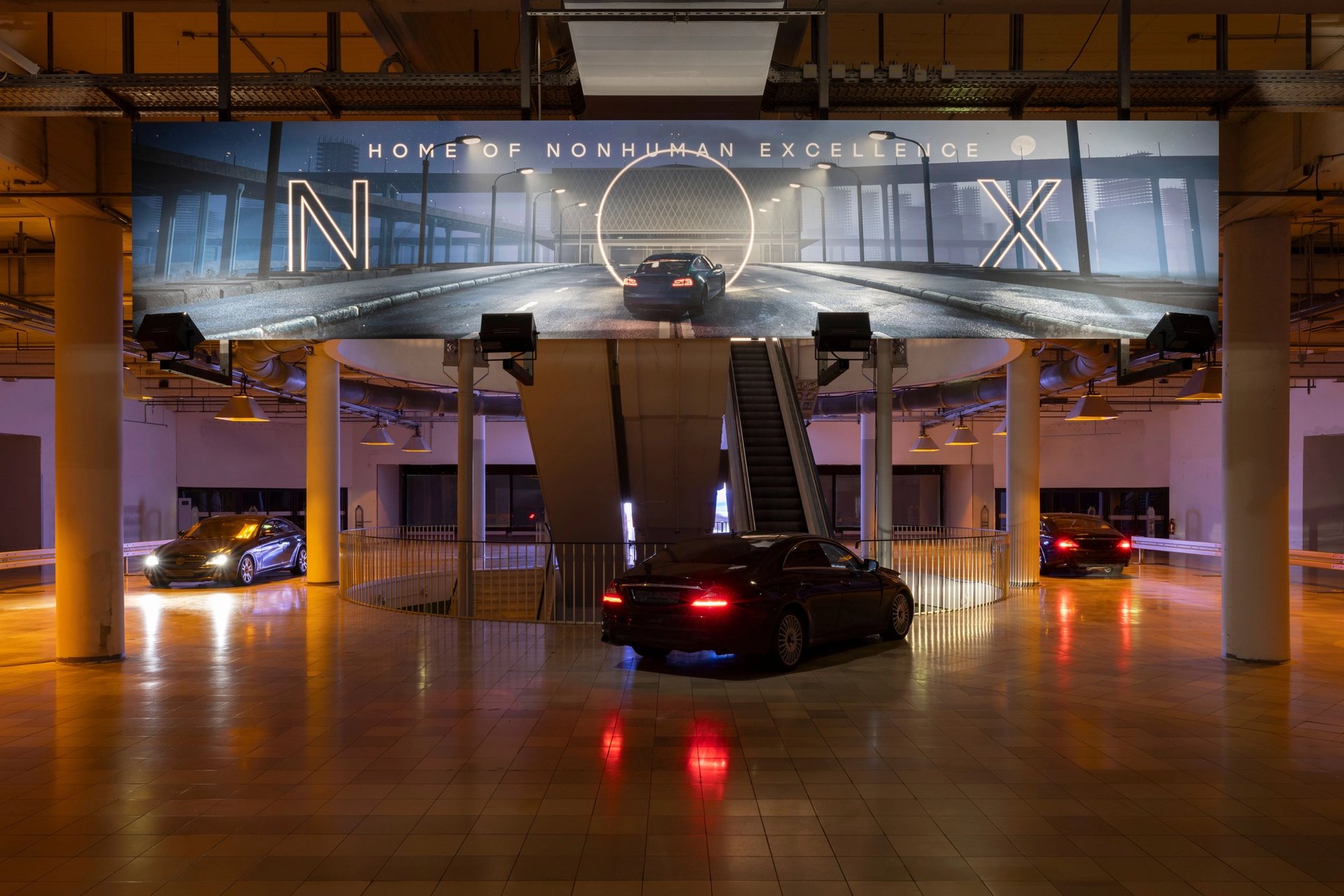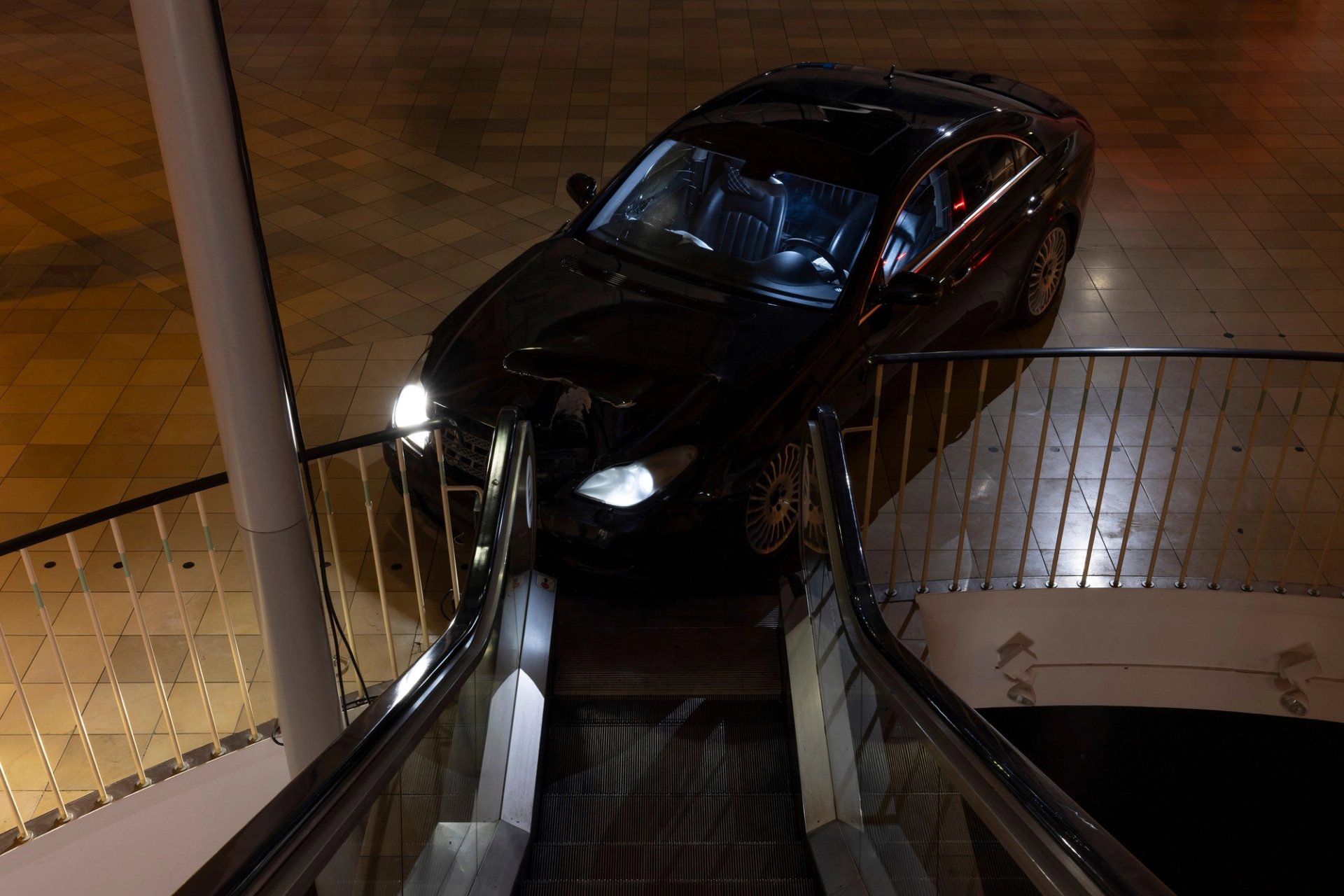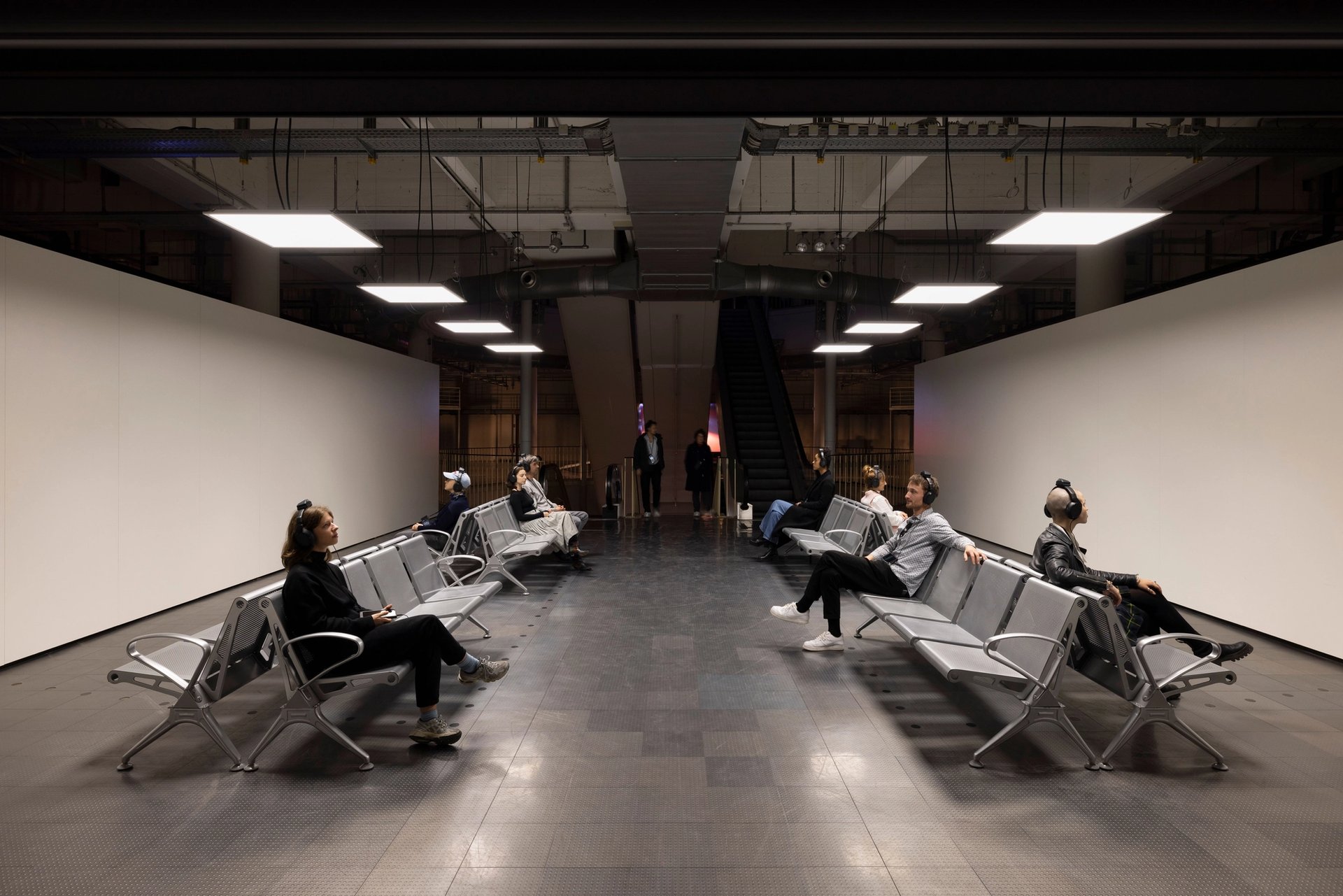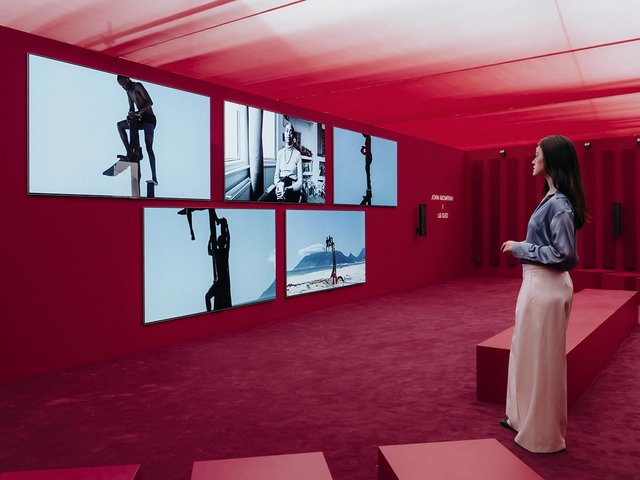A black Mercedes crashed into a pillar with its airbags ejected. This is the image that greets visitors to Lawrence Lek’s exhibition Nox, for which the London-based artist has taken over three floors of a disused sporting goods store in west Berlin. Commissioned by the LAS Art Foundation, a nomadic art organisation that focuses on technology and science, the show is the latest in which Lek uses speculative fiction to explore topics of artificial intelligence (AI) and digital worlds—this time taking self-driving cars as his subject.
Upon entering the exhibition, visitors are given a headset and invited to wander around the dimly lit space. Here, they encounter various stages and scenes of a wayward, self-driving car undergoing post-collision “therapy” and rebooting its software. Nox is narrated by one such car that has undergone therapy. Its human-like voice and existential ponderings prompt a number of unusual questions: can a self-driving car feel intergenerational trauma? What similarities exist between AI-powered vehicles and horses? We sat down with Lek for some answers.

Lawrence Lek, NOX, 2023. © Lawrence Lek. Commissioned by LAS Art Foundation. Photo: Andrea Rossetti
The Art Newspaper: The scenography in this show is particularly striking. Walk me through its setting in a disused mall.
I am architecturally interested in the design of institutions such as shopping malls, schools, prisons. These spaces are mirror images of each other because they’re designed to keep people contained. I wanted to combine that visual structure with my world-building practice, which is centred on non-human and AI perspectives. Nox is an exhibition, installation and media commission.
The disused mall also speaks to the dying 20th century, while its subject, AI, is something that will likely come to define the 21st century.
My interest in AI isn’t just about its problems and promises, but also how one age passes into the next. There is an obsolescence built into the architecture of the disused mall. And with human perspectives of AI, ideas of obsolescence are also brought up.
The ideas of video games seem prominent in the show’s design. There’s a choose-your-own-adventure element to this show, as it is somewhat non-linear. This seems influenced by video games.
There’s various schools of thought as to what defines a video game and differentiates them from other forms of cultural production. For me, I’m interested in open-world games and how that relates to the urban, flâneur experience of exploring the world, which in the Romantic imaginary is about an individual finding themselves and their place in the world.
This show discusses surveillance.
I was thinking of this weird paradox of the panopticon as it relates to self-driving cars. The smart city tracks its inhabitants at all times, so the self-driving car is a panopticon turned inside out. The car is both the subject being surveilled and also the tool of surveillance. I ask, to what extent can these vehicles escape the system of surveillance when they are so intertwined with it?

Lawrence Lek, NOX, 2023. © Lawrence Lek. Commissioned by LAS Art Foundation. Photo: Andrea Rossetti
You bring up the concept of intergenerational trauma. The software of these cars is designed so they not only study the way in which they crashed—so as to learn and become smarter—but also the crashes of previous models—essentially their ancestors.
Humans beings still cannot view the experiences of previous generations. Are you making the point that AI can, in some ways, grapple with the human condition better than humans can?
When I write these scripts I have long thought experiments about what the characters could feel. To break it down, for Nox I thought: company makes car, car is smart, car get depressed, company provides mental health service for its cars. The idea of intergenerational memory emerged after that. Humans have this dim idea of culture, tribes, community, but our memory of the past is very imperfect. Neuroscientists try and work out if things like intergenerational truma, epigenetic memory are real, false, or projections—it’s a big question mark.
In the case of the machine-learning AI and the self-driving AI car, the tragedy is you can’t not know that your existence has come at the price of your ancestor’s death. And not just at the price of that, the worse they had it, the better you perform. I think this tragic logic might apply to a superintelligent being.
This show attempts to shift the conversation of technological advancement away from Global North, by way of its fictional setting.
Conversations where the Global North isn’t the middleman is something I’m very interested in. The fictional setting of Nox is in the New Great Silk Road, a synonym of China’s Belt and Road Initiative, a logistics hub city called Korgos, in Kazakhstan, near the Chinese border. What I was trying to suggest with this location is: what if this emerging non-human life comes not from London, Paris or Berlin, but from this dustbowl city on the periphery of current global attention?

Lawrence Lek, NOX, 2023. © Lawrence Lek. Commissioned by LAS Art Foundation. Photo: Andrea Rossetti
Do you engage in other artworks made with AI?
Yes, but there is a range between people making work with AI and about AI. Sometimes I work with AI, but generally I’m making work not entirely about AI, but the times we might live in. My interest is less in the technology per se, but the social experiences that could happen as a result of those technologies. So I’m particularly interested in changing social structures or subjective experiences. Whereas some others are more concerned with how AI will change things like authorship and ownership. In the case of Nox it’s about the emotional behaviours around AI that might emerge.
What mistakes and pitfalls are you trying to avoid when making art about AI?
The pitfall of technologically based art is that what is cutting-edge today is old news tomorrow. This is definitely applicable to my work because it uses CGI and electronic music. I realised five years that resisting the rapid obsolescence of my medium is futile. There is always a new plug-in, software, a new ChatGPT. And it doesn’t even come faster, but higher fidelity, cheaper and more automated. The best I can do is to create a synthesis of my experiences, interests, hopes and fears with the medium, which is more difficult than focusing on making something technologically spectacular.
Also, art around these subjects can sometimes be a one-liner. I think due to a mixture of things: constraints of time, budget, the fact that skills of writing long-form narratives are different to writing short-form ones. One-liners work because they’re tonally consistent, you can watch 30 seconds and walk away and have gotten the idea. For me I want to think of something more longform.





